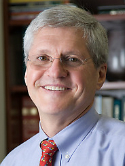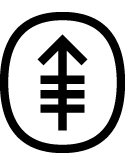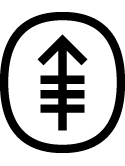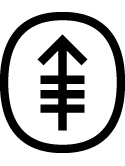Clinical and pharmacology study of chloroquinoxaline sulfonamide given on a weekly schedule Journal Article
| Authors: | Rigas, J. R.; Francis, P. A.; Miller, V. A.; Tong, W. P.; Roistacher, N.; Kris, M. G.; Orazem, J. P.; Young, C. W.; Warrell, R. P. Jr |
| Article Title: | Clinical and pharmacology study of chloroquinoxaline sulfonamide given on a weekly schedule |
| Abstract: | The in vitro human tumor colony-forming assay identified chloroquinoxaline sulfonamide (CQS) as an active agent at human plasma concentrations of >100 μg/ml. In the initial phase I trial of CQS given every 28 days, peak plasma concentrations >500 μg/ml were associated with reversible dose-limiting hypoglycemia and occasional cardiac arrhythmias. Therefore, we evaluated whether a weekly schedule of treatment might minimize the drug-associated toxicity while maintaining potential therapeutic concentrations. CQS was given intravenously over 1 h once per week for 4 weeks to 12 patients, beginning at a dose of 2,000 mg/m2. All patients underwent monitoring for cardiac arrhythmias and hypoglycemia. Plasma drug levels were measured following each dose. Mild hypoglycemia was the most common adverse effect. A median nadir plasma glucose concentration of 56 mg/dl was observed at a weekly dose of 2,500 mg/m2. Two patients experienced cardiac dysrhthmia while on study. Continuous electrocardiographic monitoring failed to identify any significant infusion-related arrhythmia. The median CQS plasma concentration measured 24 h following a 2,000-mg/m2 dose of CQS was >100 μg/ml, and the cumulative area under the concentration x time curve (AUC) determined at concentrations of ≥100 μg/ml was similar to that observed with the every-28-day schedule. The weekly schedule described herein appears to maximize the plasma AUC with an acceptable margin of safety. The recommended phase II dose and schedule for CQS is 2,000 mg/m2 given once per week. Although severe hypoglycemia is unlikely, glucose monitoring is appropriate for 6 h following CQS administration. © 1995 Springer-Verlag. |
| Keywords: | adult; clinical article; controlled study; aged; aged, 80 and over; middle aged; clinical trial; area under the curve; diarrhea; antineoplastic agents; chemotherapy; antineoplastic agent; neoplasms; controlled clinical trial; anemia; leukopenia; thrombocytopenia; drug administration schedule; glucose blood level; hypoglycemia; glucose; drug blood level; phase 1 clinical trial; heart arrhythmia; electrocardiography; electrocardiogram; phase i trial; intravenous drug administration; injections, intravenous; pharmacokinetics; arrhythmia; cancer; humans; human; male; female; priority journal; article; quinoxalines; 5 chlorosulfaquinoxaline; sulfanilamides; chloroquinoxaline sulfonamide |
| Journal Title: | Cancer Chemotherapy and Pharmacology |
| Volume: | 35 |
| Issue: | 6 |
| ISSN: | 0344-5704 |
| Publisher: | Springer |
| Date Published: | 1995-11-01 |
| Start Page: | 483 |
| End Page: | 488 |
| Language: | English |
| DOI: | 10.1007/bf00686832 |
| PUBMED: | 7882456 |
| PROVIDER: | scopus |
| DOI/URL: | |
| Notes: | Article -- Export Date: 28 August 2018 -- Source: Scopus |
Altmetric
Citation Impact
BMJ Impact Analytics
MSK Authors
Related MSK Work









